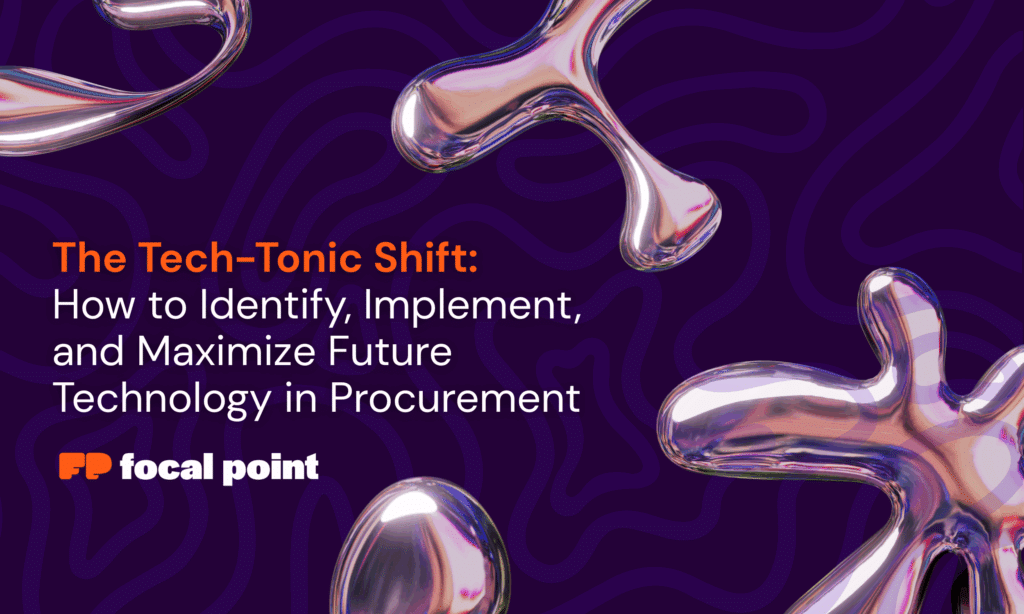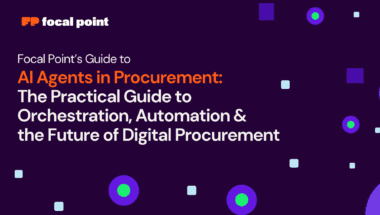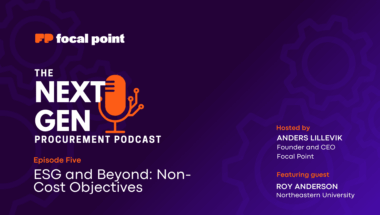Procurement leaders today face an inflection point. As technology evolves rapidly, the opportunity to move beyond manual processes and into intelligent, integrated operations has never been greater. But with that opportunity comes a critical question: How do you know when and how to adopt the right tools for the future?
In this article, we’ll explore what it takes to successfully identify, implement, and scale procurement technology that keeps your organization competitive both for today, and for the future.
When Is the Right Time to Invest in Procurement Technology?
One of the most common challenges leaders face is timing. Many attempt wait for the “perfect” moment, when budget opens up, stakeholders are aligned, or when their current tech stack finally breaks. But, as discussed on episode two of The Next-Gen Procurement Podcast by supply chain professor and procurement veteran Roy Anderson, that moment rarely comes.
“Now’s the time. There is no ‘yesterday’,” Anderson said. “Find your pain points, understand the bandwidth they consume, and start replacing them with technology.”
Both Anderson and Focal Point CEO Anders Lillevik emphasize that a telltale sign the time is right is when your current tools or vendors start resisting change. If you’re hearing “we don’t do that” more than “let’s make it work,” it’s a sign that your current tools may be holding you back.
Should You Replace or Reinforce Your Tech Stack?
You don’t always need to scrap everything and start from scratch. In fact, in many cases, layering new technology on top of legacy platforms (or upgrading existing solutions) can provide faster ROI with less disruption.
“If you have a modern solution that can be upgraded, that’s worth exploring first,” says Lillevik. “But if it can’t keep up, it may be time to bring in something new.”
The key is to assess whether your current systems are modular and orchestration-friendly. Composable architecture allows you to solve specific problems without blowing up your entire stack.
What Makes Next-Gen Procurement Tech Different?
Legacy systems were built to enforce control. But modern systems are designed to unlock strategic influence and resiliency. Today’s best procurement technology is also built to be user-friendly: mobile-first and designed for easy adoption and use, while easily managing complexity.
“New platforms are centralized and lightweight,” Anderson explains. “They’re not just easier to use—they’re easier to scale, adapt, and connect.”
Crucially, these platforms don’t just digitize existing workflows, the right platform should improve them. They should enable real-time collaboration, intelligent routing, and dynamic reporting, making it easier for procurement to act as a true, strategic business partner.
How Do You Build the Business Case?
We’re past the era of 18-month implementations and multi-year payback periods. Procurement tools today should deliver results within weeks, not quarters. And updates like new workflows or onboarding new supplier and users should be timely, too.
“Every tool you put in today should have an immediate payback,” Anderson says. “It should let you do more with less.”
When making your case to finance or the C-suite, don’t focus only on cost savings. ROI should also account for speed, productivity, and risk mitigation. The best implementations reduce manual effort, increase visibility, and accelerate business decisions; benefits that directly support revenue growth and operational efficiency.
What Skills Will Procurement Need to Succeed?
The discourse online about AI ‘replacing’ human resources is endless. But ultimately, procurement technology should be a multiplier, not a replacement. The teams that thrive are the ones who can activate it. That starts with developing new skill sets across the procurement function.
“The core team needs to focus on specialization,” says Anderson. “Bring in people from engineering, marketing, or legal—people who speak the language of the category.”
Deep category expertise allows procurement to partner with business stakeholders more strategically. Meanwhile, technical fluency, change management, and supplier collaboration have become essential traits. It’s about knowing how to ask the right questions and extract the right insights from the tools you deploy.
What Role Should AI Really Play?
AI has become foundational. From automating intake and approvals to identifying supplier risks and market trends, AI is radically transforming the way work gets done.
“The goal is to eliminate 99.9% of transactional work,” says Anderson. “That’s what frees teams to focus on strategy, innovation, and value creation.”
As more tactical procurement tasks are automated, leaders must shift focus to interpreting insights, coaching stakeholders, and designing programs that scale to meet the increasingly complex demands faced by their function. So, while AI handles the repetition, humans can handle the relationships and strategic decision making.
How Has Implementation Changed?
Perhaps the most exciting shift in procurement tech is how quickly value can now be realized. What once required months of configuration can now be done in days, even for large enterprises.
“We just onboarded 11,000 users for intake in under a week,” Lillevik shared. “That would have been unthinkable just a few years ago.”
Teams can begin with a single use case and expand gradually, ensuring that value is delivered at every phase. The result is faster adoption, improved compliance, more immediate impact, and significantly less implementation fatigue.
Final Thoughts: Don’t Wait to Lead
Technology is no longer a nice-to-have in procurement, it’s the foundation for competitive advantage. But adopting new tools isn’t just a technical challenge; it’s a leadership opportunity.
“The teams that succeed,” says Anderson, “are the ones that eliminate the noise and rise to become experts in their company. That’s how procurement earns a seat in the boardroom.”
If you’re serious about elevating procurement from a cost center to a strategic force, the time to act is now.



